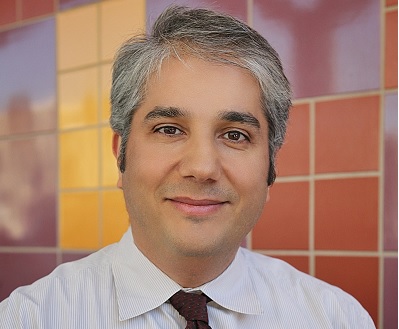Investigators at the Children’s Center for Cancer and Blood Diseases at Children’s Hospital Los Angeles have identified new findings about an immune cell – called a tumor-associated macrophage – that promotes cancer instead of fighting it. They have identified the molecular pathway, known as STAT3, as the mechanism the immune cell uses to foster neuroblastoma, a pediatric cancer, and have demonstrated use of a clinically available agent, ruxolitinib, to block the pathway. Results of the study were published in the journal Oncotarget on September 20.
Neuroblastoma is the second most common solid tumor effecting children. Individuals with high-risk disease have a mortality rate of approximately 50 percent. Certain conditions are associated with high-risk disease. High levels of some chemicals involved with inflammation and the presence of an immune cell called a tumor-associated macrophage (TAM) are associated with high-risk disease and lower survival rates. Macrophages are a type of immune cell that typically function to battle disease, not encourage it.

“The macrophages are essentially co-opted by the tumor cells to help them grow,” said Shahab Asgharzadeh, MD, director of the Basic and Translational Neuroblastoma program at CHLA and lead investigator of the study. “We’re trying to find out more about the mechanisms that enable TAMs to help cancer grow so that we can target the pathways they use and block their pro-tumor effect.”
The team wanted to find out whether effective therapeutic approaches for children with neuroblastoma could be based on targeting inflammation-associated biologic pathways in the area surrounding the tumor, called the tumor microenvironment. Using a mouse model to examine the activity of TAMs within the tumor microenvironment, the research team observed the “recruitment and polarization” of TAMs which enhance the ability of neuroblastoma to spread and grow. They found that TAMs exhibit a dual role – not only nourishing the neuroblastoma but also effectively helping them to evade the “good immune cells” seeking to kill the tumor cells.To study the effect of TAMs on neuroblastoma cell growth and proliferation, the investigators co-cultured both mouse and human neuroblastoma cells with TAMs and found a significant increase compared to tumor cells without TAMs.
In an effort to find out what the TAMs were secreting that caused stimulation of tumor cells, the investigators targeted IL-6, an immune substance known to cause proliferation of certain types of cancer. Using a mouse model that lacked IL-6, they still observed increased tumor growth. In these experiments, they noted activation of the STAT3 cell-signaling pathway – known to promote tumor growth preceding an increase of MYC – a gene that drives many types of cancer.
These findings led them to target the STAT3 pathway. Using a clinically available drug, ruxolitinib, known to block the STAT3 pathway, the investigators co-cultured both human and mouse TAMs and neuroblastoma cells. They observed that the immune cells no longer supported tumor growth.
“Targeting STAT3 may be a promising approach to block interactions between tumor cells and the ‘traitorous’ immune cells, and a way to improve outcomes for children with high-risk neuroblastoma,” said Asgharzadeh, who is also a professor of pediatrics with the Keck School of Medicine of the University of Southern California.
According to Asgharzadeh, the next step is to combine agents that block the STAT3 pathway with drugs that have been effective in treating neuroblastoma.
Other contributors to the paper include Michael D. Hadjidaniel, Sakunthala Muthugounder, Long T. Hung, Michael A. Sheard, Soheila Shirinbak, Randall Y. Chan, Rie Nakata, Lucia Borriello, Jemily Malvar, Rebekah J. Kennedy, Hiroshi Iwakura, Takashi Akamizu, Richard Sposto, Hiroyuki Shimada, and Yves A. DeClerck, all of Children’s Hospital Los Angeles, along with Hiroshi Iwakura and Takashi Akamizu of the First Department of Medicine, Wakayama Medical University in Japan. Asgharzadeh, Sposto, Simada and DeClerck are also faculty members of the Keck School of Medicine of USC. The research was supported by grants from the Department of Defense (CDMRP10669916), (W81XWH-12-1-0571), the T.J. Martell Foundation, the Norris Foundation, the Nautica Malibu Triathlon and the National Institutes of Health U54 (5U54CA163117).
https://www.chla.org/press-release/when-good-immune-cells-turn-bad


